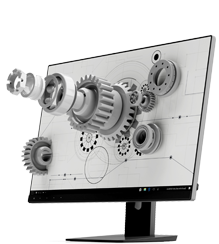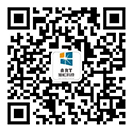Industry analysis of high contrast applications for industrial LCD screens

High contrast industrial screens have been deeply integrated into core industries such as healthcare, transportation, new energy, and military aerospace, and play an irreplaceable role in industrial automation
The high contrast characteristics of industrial LCD screens enable them to present clear and distinct images and data in complex lighting environments, becoming a key technology for improving visualization efficiency and safety in many industrial fields. Through technological optimization and scene adaptation, high contrast industrial screens have been deeply integrated into core industries such as healthcare, transportation, new energy, and military aerospace, and play an irreplaceable role in industrial automation. The following analysis will focus on industry applications, technical support, and future trends.
1、 Medical industry: The cornerstone of precise diagnosis and life monitoring.
Medical equipment requires extremely high contrast for displays, which need to present subtle image differences clearly under complex lighting conditions (such as strong or low light environments in operating rooms). For example:
Medical monitor: It needs to display key data such as electrocardiogram and blood oxygen saturation in real time. High contrast (usually ≥ 1000:1) can ensure that medical staff can quickly identify abnormal waveforms and avoid misjudgment.
Ultrasonic diagnostic equipment: high contrast combined with high resolution, can clearly distinguish the layers of human tissue, assist doctors in accurately identifying lesions, especially in vascular imaging and tumor detection, which plays a significant role.
In addition, some high-end medical equipment adopts dynamic contrast enhancement technology (DCE) to automatically optimize the display effect based on ambient light, further improving diagnostic efficiency.
2、 Transportation: Dual guarantee of safety and efficiency
In the fields of vehicle, rail transit, and aviation, high contrast screens are the core carrier of reliable information transmission:
Car display screen: used for navigation systems and driving monitoring, with high contrast to ensure clear display of road information even in direct sunlight or strong nighttime light, reducing driver visual fatigue. For example, IPS/FFS wide viewing angle technology can avoid contrast attenuation caused by viewing angle offset.
Traffic indication system: Highway variable message boards, railway timetable display screens, etc. need to be kept conspicuous in strong light environments. Through local dimming technology, the brightness of key information areas is increased, while the power consumption of background areas is reduced, achieving high visibility around the clock.
Aviation cockpit: The high contrast screen stably presents flight parameters and meteorological data under strong light and complex light changes, ensuring flight safety.
3、 New Energy and Power Monitoring: Data Visualization in Complex Environments
New energy equipment is often deployed outdoors or in high interference environments, with high contrast screens assisting in precise monitoring:
Photovoltaic power station: Real time display of parameters such as voltage and current of solar panels, maintaining high contrast under strong light to avoid misinterpretation of data by operation and maintenance personnel. Part of the plan combines anti reflective coating (AR Coating) with a reflectivity of less than 2%, further optimizing visibility.
Wind power plant: Monitor dynamic data such as wind speed and power generation efficiency, with high contrast to ensure clear information in low temperature or dusty environments, reducing maintenance blind spots.
Power Monitoring Center: Real time display of power grid status through high contrast large screens, combined with intelligent dimming technology, adapts to changes in day and night lighting, and improves monitoring efficiency.
4、 Military and Aerospace: Reliable Display in Extreme Environments
Military equipment has strict requirements for the environmental adaptability of displays, and high contrast technology combined with anti-interference design is key. Military vehicles and ships: in strong light or high humidity environments such as deserts and oceans, screens need to maintain high contrast and anti glare to ensure accurate transmission of tactical information. For example, optical bonding technology is used to eliminate internal reflection and improve transmittance by 48.
Spacecraft instruments: Under strong radiation and extreme temperature differences in space, high contrast screens need to have both wide temperature operation (-30 ℃ to 85 ℃) and long lifespan characteristics to ensure the reliability of mission execution.
5、 Industrial automation: the "visual center" of intelligent production
In intelligent manufacturing, high contrast screens are the core interface for device monitoring and human-computer interaction: production line control panels: real-time display of device status, production data, and fault alarms, high contrast ensures that operators can quickly identify abnormalities under strong light in the workshop. For example, the TPC-M8 series optimizes display hierarchy 26 through dynamic contrast algorithm. Industrial robot interface: high contrast combined with touch function, improves operation accuracy, suitable for precision assembly and inspection scenarios. Environmental monitoring system: In industries such as pharmaceuticals and chemicals, screens need to display monitoring data stably in dusty or chemical gas environments, and anti glare and high durability designs are indispensable.
Future trend: Technology integration and intelligent upgrading
Micro LED and oxide semiconductor technology: TCL Huaxing's high transition oxide technology (HFS) promotes the development of high contrast screens towards thinner and more energy-efficient direction by improving penetration rate and reducing power consumption. AI driven adaptive display: In the future, screens or integrated AI algorithms will automatically adjust contrast and color according to the environment and user behavior, further optimizing the human-computer interaction experience. Flexible display technology: The breakthrough of printed OLED and scroll screens enables high contrast screens to adapt to more non planar installation scenarios, such as curved consoles or wearable devices.
Conclusion
The high contrast application of industrial LCD screens has penetrated into core fields such as healthcare, transportation, energy, and military industry, becoming a key technology for improving safety and efficiency. With the integration of material innovation and intelligent technology, high contrast screens will break through more environmental limitations in the future, promoting the development of industrial displays towards higher efficiency and reliability.
AUO Industrial LCD screens:https://www.idtdisplay.com/products/AUO_LCD_Displays/










